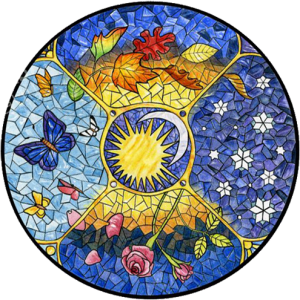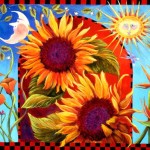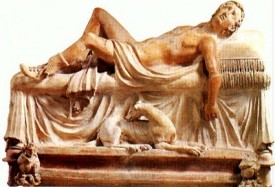 reprinted from 2006. Artwork by Paulina Stuckey-Cassidy
reprinted from 2006. Artwork by Paulina Stuckey-Cassidy
Many people will celebrate Easter Sunday as the day that Christ rose from his grave and achieved godhood. In ancient mythology, the archetype of the dying and rising god actually began thousands of years before Jesus with the stories of Osiris and Tammuz, Adonis and Attis — all legends of gods that suffered an untimely end but were reborn into physical existence in order to spread their religion. Festivals celebrating the death of the god in winter when the crops were dying and the resurrection in spring were common.
Long before the birth of Jesus, Dionysus was resurrected and ascended to heaven after being torn apart by the Titans, an event celebrated in mystery cults in early Rome. Belief in Dionysus was thought to give one eternal life, and followers were initiated by bathing.
Several hundred years before Jesus, stories about the Anatolian god Attis claimed that he was born to a Virgin and was considered both the Father and the divine son. The Festival of Joy was celebrated every year in Rome: the first day commemorated his death, and on the third day the worshippers celebrated his rising from the dead.
Mithras was a Persian god who had faded into prehistory until being imported into Rome around 70 BC according to Plutarch. Mithras was born on December 25 of a virgin mother. He was born into a mortal body in order to redeem humanity and was known as Savior.
According to the 8th century Christian monk and historian Bede, first asserted in his book De Ratione Temporum that Easter was named after Eostre (a.k.a. Eastre). Eostre was a Teutonic goddess of fertility, who was often portrayed in Anglo-Saxon myth with a white hare standing in attendance. The hare, or rabbit, of course symbolized fertility and it was said that Eostre took the shape of the rabbit at the time of the full moon. When Christianity took over the old nature religions, the fertility rabbit became the Easter Bunny.
The timing of Easter coincides with the Jewish festival Passover, presumably because Jesus’s Last Supper took place at the Passover meal. Passover occurs on the 14th day of the lunar month following the Vernal Equinox, and when the Catholic Church established their dogma in Nicea in 325 c.e., it was decided that Easter would take place on the Sunday following the first full moon after the Vernal Equinox except if it falls on the same day as Passover.
Regardless of the holiday we celebrate, spring is a time of rejuvenation, of resurrection as that which has appeared dead springs to life. It’s a time when we are able to revive parts of ourselves that may be dead as well, and live more consciously and with greater presence.
[related_posts limit=”5″ image=”50″]














